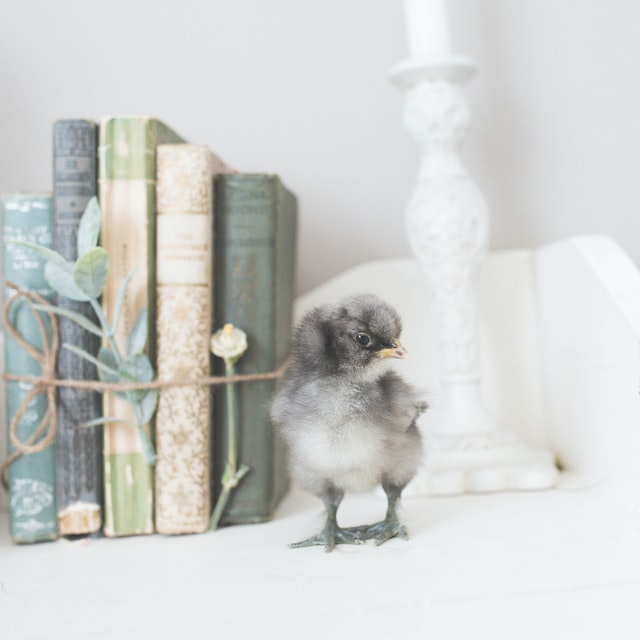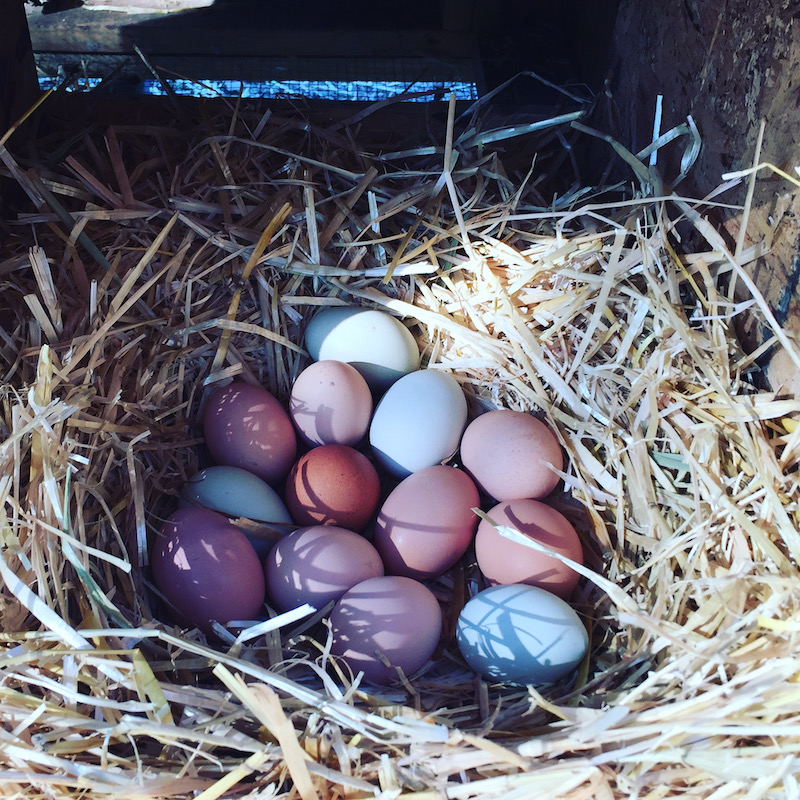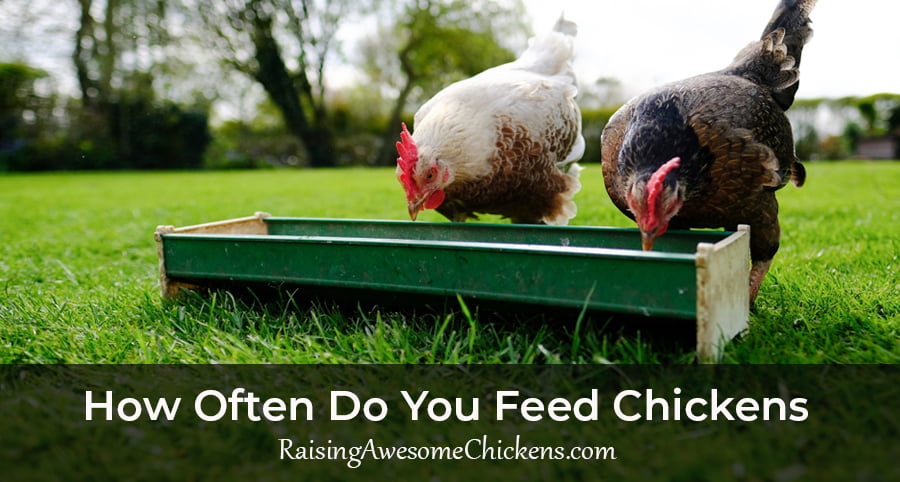Last Updated on March 6, 2024 by AwesomeChickens
Table of Contents
Essential Tips for Poultry Hydration
Maintaining fresh water for chickens during the summer months is essential for their health and productivity. High temperatures can cause water to grow harmful bacteria and algae, which can lead to illness among poultry. Chicken owners must implement strategies to ensure that their flocks have access to clean drinking water in the heat. The water quality not only impacts their hydration levels but also plays a vital role in their body temperature regulation.

To keep water fresh, it’s important to understand the factors that compromise its quality. These include the location of the water source, the type of containers used, and the frequency of water replenishment. Containers should be placed in shaded areas to prevent algae growth and to keep the water cool. The use of appropriate materials for the waterers that do not harbor bacteria easily is also crucial.
- BPA FREE: Made from BPA free plastic.Accomodates up to 100 chickens or game birdsCan be used with the Harris Farms Heated Poultry Drinker BaseTop fill bucket, easy-fill and easy-clean. Excellent for indoor and outdoor use
- EASY-FILL: Top lid makes refilling water simple and easy
- CARRYING HANDLE: Sturdy handle makes relocating waterer an enjoyable task
- MULTI-USE: This drinker is suitable for both indoor and outdoor use
- SIMPLE ASSEMBLY: Simply assembly required, please review video for step-by-step instructions
- Accomodates up to 100 chickens or game birds
- Can be used with the Harris Farms Heated Poultry Drinker Base
- Top fill bucket, easy-fill and easy-clean. Excellent for indoor and outdoor use
Regular cleaning routines are vital to prevent the buildup of contaminants. Waterers should be scrubbed and rinsed thoroughly on a consistent basis to remove any dirt, debris, or biofilm. Refilling with fresh, cool water daily ensures that chickens have access to refreshing drinks throughout the day. Observing these measures can dramatically reduce health issues and support optimal growth and egg production even in the hottest months.
Understanding the Impact of Heat on Chickens

During summer, high temperatures pose significant risks to chickens, as they can elevate body temperature, leading to heat stress or even heat-related illnesses.
Signs of Heat Stress and Overheating
Chickens show indications of heat stress and overheating through noticeable changes in behavior. Panting, increased water intake and reduced feed consumption are common signs. Chickens may also exhibit lethargy, wing spreading to dissipate heat, and in severe cases, staggering or collapsing. Chronically overheated chickens can suffer irreversible effects or even die from heat stroke.
The Importance of Hydration and Water Quality
Proper hydration is crucial for chickens, especially in extreme heat. They require continuous access to fresh water to regulate their body temperature and maintain physiological functions. High quality water also plays a role in preventing heat exhaustion and maintaining electrolyte balance. Stagnant water that has developed algae or other contaminants can worsen their suffering, thus it is essential to ensure their water supply remains clean and fresh.
Optimizing the Coop for Summer Conditions
In summer, ensuring a well-ventilated coop with ample shade is crucial to keep chickens cool and hydrated. Strategic design and the arrangement of cooling elements can make a significant difference in maintaining fresh water for the chickens.
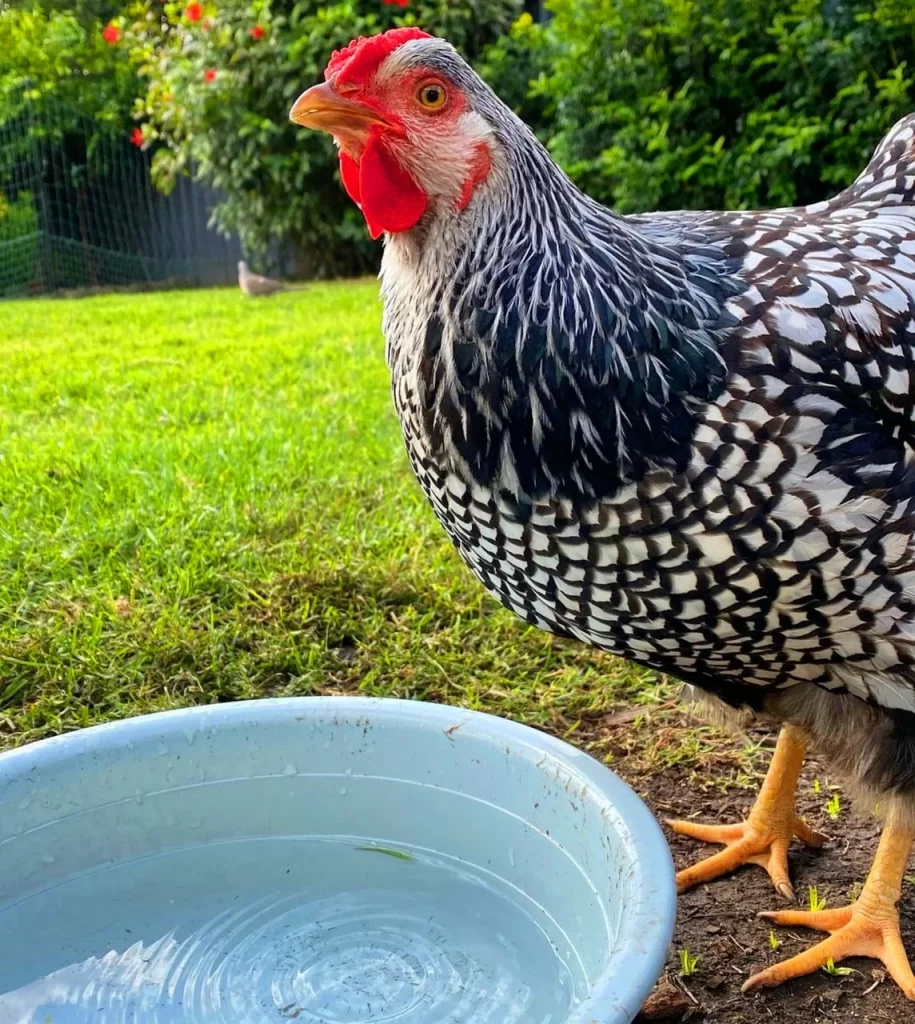
Improving Ventilation and Airflow
Proper airflow through the chicken coop is vital to dispel heat and provide fresh air. Vents should be installed both at the top and bottom of coop walls to create a cross breeze that will carry away excess heat and moisture. It is useful to install windows on opposite sides of the coop, which can be opened or covered with wire mesh to improve circulation while keeping predators out. For enhanced ventilation, consider adding a fan to help move stagnant air, but ensure it is securely positioned and its cables are safely out of the chickens’ reach.
Providing Shade and Cooling Mechanisms
Creating shaded areas within and around the chicken coop can greatly reduce the internal temperature. Planting trees near the coop can offer natural shade, but for immediate relief, installing a shade cloth over the coop or run can block out a significant portion of direct sunlight. Cooling mechanisms such as misters or a misting system can be integrated to lightly dampen the air, which, as it evaporates, cools the surrounding environment. When setting up misting systems, they should be placed strategically to prevent the coop’s interior from becoming damp and to ensure the chickens’ water supply remains uncontaminated.
Effective Water Management Strategies
During summer, chickens require consistent access to fresh water to maintain health and productivity. These water management strategies focus on ensuring chickens have clean, cool water throughout the hot summer months.
Maintaining Clean and Accessible Water Sources
The first step in water management is to keep the water clean. Algae and bacteria thrive in warm water, so frequent cleaning is essential. Waterers should be scrubbed with a brush and rinsed daily.
- Daily Maintenance: Rinse and refill waterers every day.
- Weekly Cleaning: Use a vinegar solution for a deeper clean once a week.
Furthermore, waterers should be placed in shaded areas to prevent direct sunlight from warming the water and promoting algae growth.
- Strategic Placement: Set up water stations in multiple shaded locations.
- Elevate Water Sources: Keep water containers above ground to prevent contamination from dirt and debris.
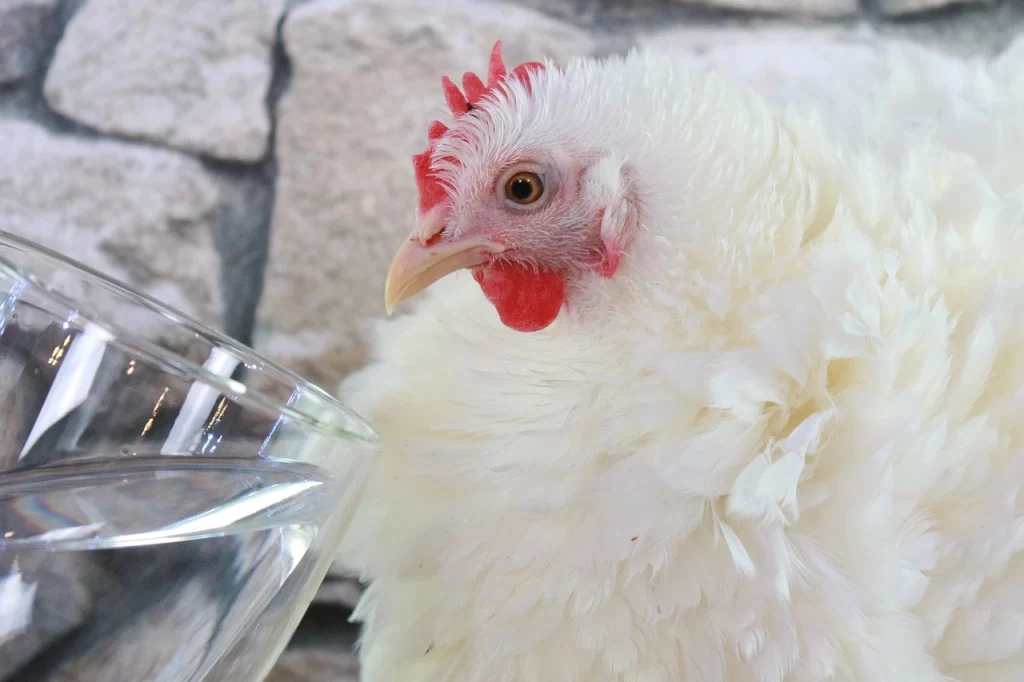
Using Ice and Misters to Keep Water Cool
To combat heat, adding ice cubes or frozen water bottles to the water can keep temperatures down.
- Ice in Water: Drop ice cubes directly into waterers during the peak heat hours.
- Frozen Bottles: Place frozen water bottles in the water, which provide a more prolonged cooling effect.
Misters can be installed near the drinking area to reduce the surrounding air temperature, indirectly keeping the water cooler.
- Set Up Misters: Install a misting system around the pen to keep the area cool.
Additional treats like watermelon and other frozen treats can supplement chickens’ hydration. Watermelon is especially good, as it is high in water content.
- Hydration Treats: Offer chunks of watermelon or other melons during the day.
- Frozen Treats: Give frozen fruits or vegetables as a refreshing snack.
By implementing these strategies, poultry owners can ensure their flocks are well-hydrated and stress-free during the hot summer months.
Nutrition and Treats for Cool Hydration
During hot summers, it’s crucial to provide chickens with hydration options that also supplement their nutritional needs. Treats that are high in water content not only refresh chickens but support their digestion with vital nutrients.
Incorporating Fruits and Vegetables in the Diet
Fruits and vegetables are excellent for chicken care, as they add essential nutrients and hydration to their diet. A balanced addition of these food items should complement the regular chicken feed.
Examples of hydrating foods for chickens:
- Watermelon: High water content and appreciated by chickens.
- Berries: Strawberries, blueberries, and raspberries offer antioxidants.
- Leafy Greens: These can be easily mixed into the soil for chickens to forage.
- Tomatoes: Ensure they are fully ripe and avoid feeding the plants and leaves.
- Cucumbers: Mostly water, they are refreshing and aid in cooling.
Creating Frozen Fruit and Vegetable Treats
Frozen treats are a creative way to keep chickens hydrated. These treats can be made by freezing fresh fruit and vegetables or by making a frozen mix of various nutritious ingredients.
Steps for creating frozen treats:
- Select fruits and vegetables: Choose bananas, grapes, and berries for a mix of hydration and energy.
- Prepare: Cut into appropriate sizes to prevent choking and remove any seeds that might be harmful.
- Freeze: Distribute the pieces on a baking sheet and freeze until solid, then store in containers.
- Serve: Give chickens these frozen goods during the hottest part of the day to offset heat stress.
By integrating fruits and vegetables into chickens’ diets and providing frozen treats, caregivers can ensure efficient hydration and nutrient intake during the summer months.



